Spirit Bay stands a groundbreaking sustainable development representing a historic $400 million partnership between the Trust for Sustainable Development and the Sc’ianew (Beecher Bay) First Nation. This precedent-setting collaboration was created to transform 100 acres of pristine waterfront land near Victoria B.C. into what was planned as Canada’s first Indigenous-led sustainable new town, proving that reconciliation and development could unite to create extraordinary communities.
Unveiled in 2013 under David Butterfield’s visionary leadership, Spirit Bay emerged as a bold experiment in alternative land tenure, utilizing an innovative 99-year leasehold structure built on a 150-year master lease. This pioneering approach created a new model for sustainable development that made homeownership accessible while preserving long-term land stewardship, attracting national attention from developers seeking alternatives to traditional fee-simple ownership.
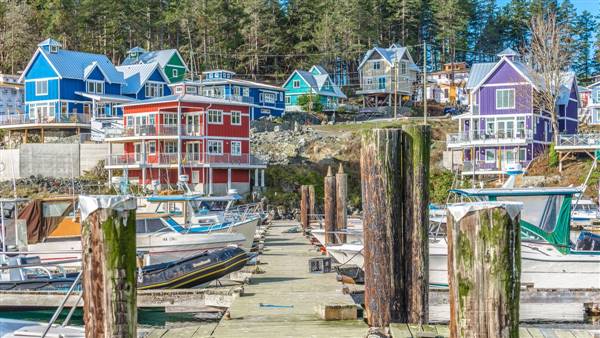
Unprecedented Scale and Market Innovation
The Spirit Bay masterplan encompasses a planned new town of 500 residential units across multiple neighborhoods, ranging from 600-square-foot forest cottages to 2,500-square-foot waterfront estates. With homes starting at $259,000, the development created North America’s most diverse price point sustainable community on leasehold land, proving that alternative ownership models could attract buyers across all demographics while maintaining architectural excellence and environmental standards.
The development’s innovative leasehold structure revolutionized how sustainable communities could be financed and developed at scale. By separating land ownership from home ownership, Spirit Bay created a model that reduced entry costs by 30% while ensuring long-term sustainable land management. This approach attracted over $8.3 million in federal infrastructure investment, recognizing Spirit Bay as a national model for innovative development financing.
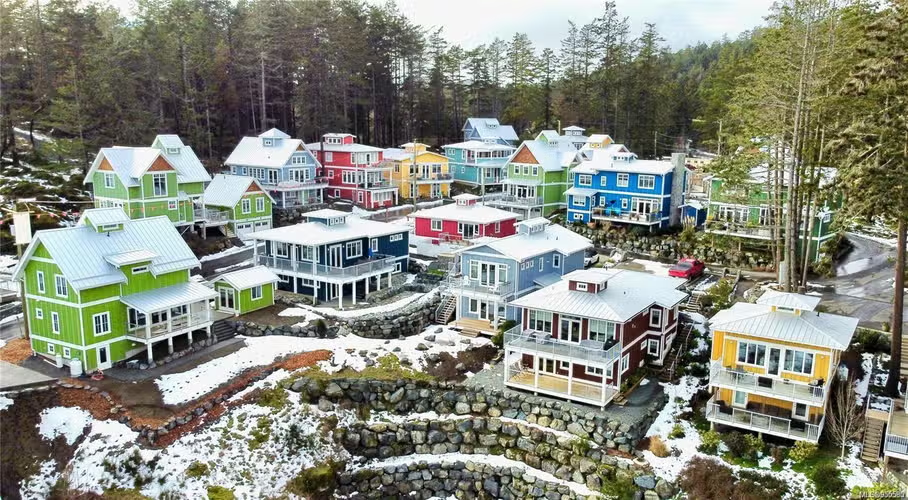
Architectural Excellence and Community Design
The Trust created a development that set new standards for sustainable coastal communities. The colorful board-and-batten homes with distinctive cupolas became architectural icons, featuring cutting-edge sustainable technologies within traditional seaside village aesthetics. Each home incorporates passive cooling systems through unique cupola designs, metal roofs for 50-year longevity, and architectural details that maximize natural light while minimizing energy consumption.
The 50,000-square-foot commercial town centre, anchoring the development, was designed to include medical facilities, grocery stores, coffee shops, and business spaces, creating a complete community where residents could live, work, and play without leaving the development. This mixed-use approach on leasehold land proved that sustainable communities could achieve the density and diversity typically found only in urban centers.
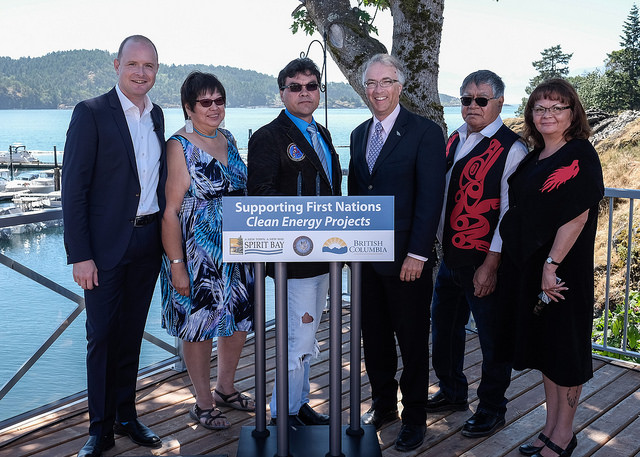
Revolutionary Infrastructure and Planning
Spirit Bay pioneered infrastructure innovations that set new benchmarks for sustainable development. The community’s district energy system, advanced sewage treatment facilities, and comprehensive stormwater management demonstrated how large-scale developments could achieve net-zero environmental impact.
David Butterfield’s vision extended beyond individual homes to creating a complete ecosystem where every element reinforced sustainability. Streets intentionally designed too narrow for conventional vehicles promoted walking and cycling, while the comprehensive trail network connected all neighborhoods to the waterfront and commercial center. This pedestrian-first design on 100 acres proved that car-optional communities could thrive even in suburban locations.
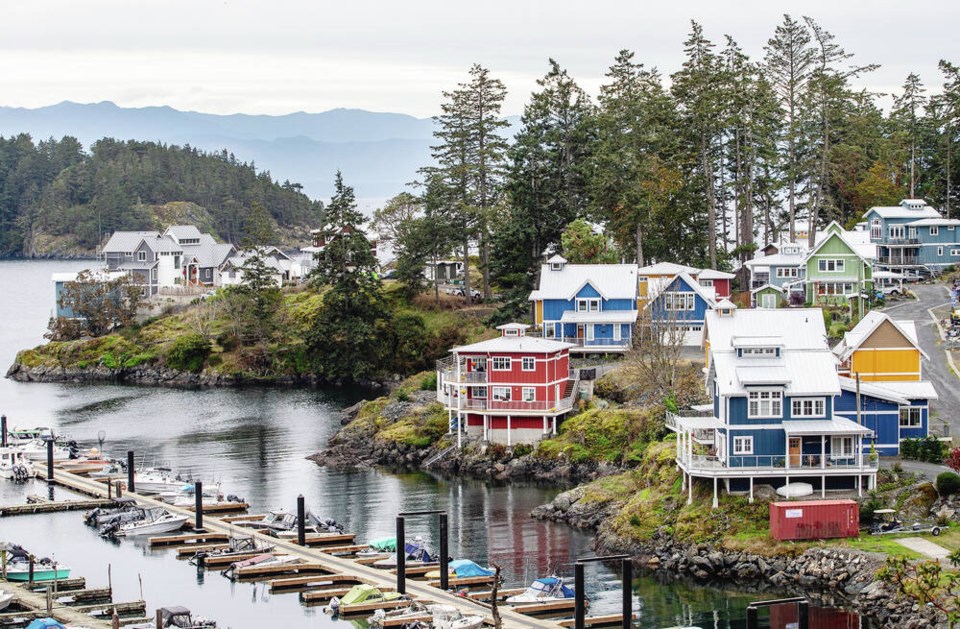
Environmental Leadership at Scale
The Trust brought its full arsenal of sustainable development expertise to Spirit Bay, creating a 100-acre living laboratory of environmental innovation:
- Comprehensive water conservation systems reducing consumption by 50%
- Native plant landscaping across 40 acres requiring zero irrigation
- Protected forest corridors maintaining wildlife habitat throughout the development
- Zero-emission electric vehicle infrastructure supporting 500 homes
- Advanced building systems reducing energy consumption by 60%
- Preservation and enhancement of waterfront ecosystems
National Recognition and Development Legacy
Spirit Bay garnered recognition as a breakthrough in sustainable leasehold development, attracting attention from government agencies, academic institutions, and developers across North America. The project proved that leasehold structures could support massive sustainable developments while maintaining affordability and environmental excellence.
David Butterfield’s vision for Spirit Bay created a new paradigm for how sustainable communities could be developed on leasehold land. His belief that development should enhance rather than exploit land value found perfect expression in the innovative ownership structure that preserved long-term stewardship while enabling immediate development. The project demonstrated that creative land tenure models could unlock sustainable development opportunities previously considered economically unviable.
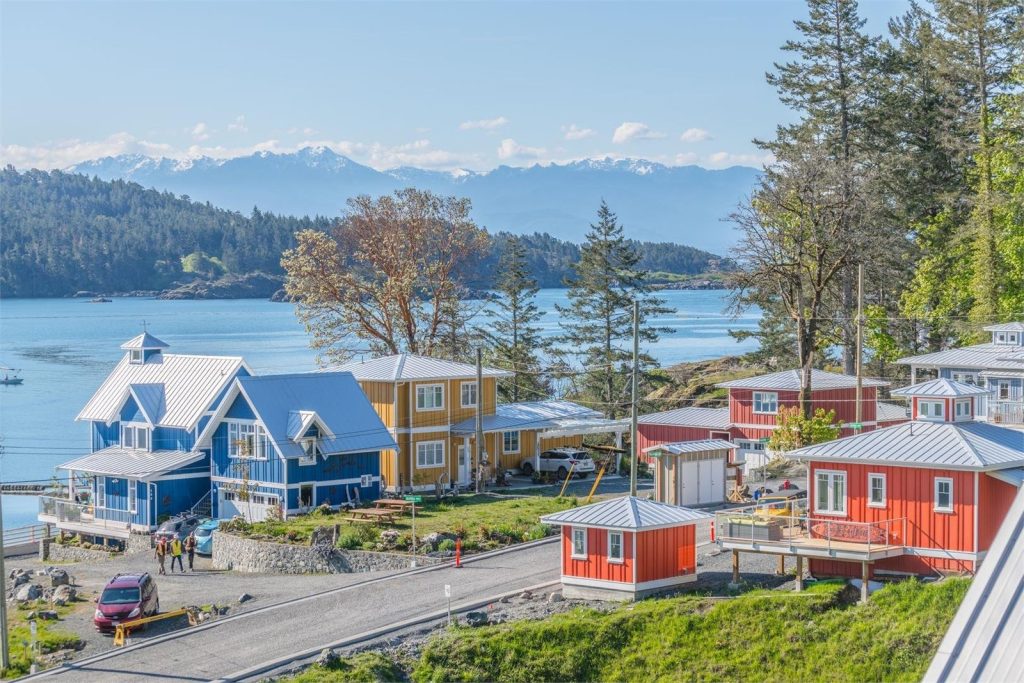
A New Model for Sustainable Development
Today, Spirit Bay stands as testament to the Trust’s ability to reimagine fundamental assumptions about land ownership and sustainable development. The project didn’t just build homes; it created an entirely new development model that proved leasehold land could support world-class sustainable communities. Where conventional developers saw constraints in leasehold structures, the Trust saw opportunity to create a $400 million proof that innovative land tenure, exceptional design, and environmental stewardship could unite to create extraordinary communities that would thrive for generations.